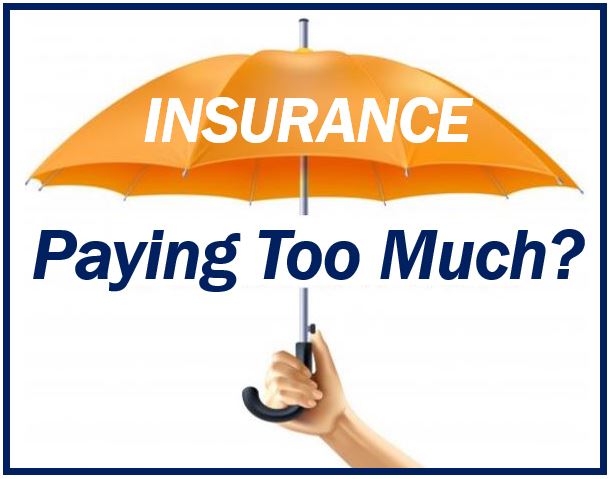Purchasing insurance for your organisation can be a stressful experience. That’s why it makes sense to do everything you can to ensure it’s as stress-free as possible, right?

Well, not exactly. Insurance providers often profit from this perception and offer ready-made policies in the hopes that you’ll choose convenience over financial advantage.
There’s one thing that you can be sure of about off-the-shelf insurance policies. They weren’t made for you! Therefore, they can end up costing you more than you need. In this article, you’ll find out how to fix that with an holistic insurance purchasing strategy.
The Price of Convenience
Insurance providers are highly incentivized to have a small selection of insurance products that most of their customers will purchase. That significantly reduces the cost of doing actuarial analysis and drafting custom policies (and working out custom prices) for every individual customer.
However, those products are never made with your specific needs in mind. You will almost always end up paying for more insurance than you need.
That’s because a ready-made policy isn’t made with your exact risk profile or exact balance sheet in mind. It’s made to fit a generic entity similar to yours.
For instance, you may undertake substantial risk-management actions on your side to prevent claims. That risk-management doesn’t make the slightest difference if you buy an off-the-shelf policy.
Even some insurance advisors aren’t able to solve this problem. Many will immediately start working on your policy documents and look for ways to reduce premiums. They may try to play around with your deductible or reduce coverage.
But that approach gets a core element completely wrong. It assumes that the policy is already built for your organisation, in other words, that insurance is the best solution for you.
In reality, policy aggregates and excesses could be far from the optimum for your needs. That can increase the price of insurance substantially and if you’re paying over £100,000 pa for your corporate insurances, you could stand to save tens of thousands of pounds.
The solution is an holistic insurance purchasing strategy that starts with understanding your past and potential future claims and takes into account your balance sheet specifics.
How You Can Fix It
Rather than accept multiple off-the-shelf policies from a multitude of insurers, you need to understand what insurers are looking for and how to give it to them whilst, at the same time, getting what you need.
One of the primary issues many businesses need to address is over-insurance. You should only insure what you can’t afford to lose, everything else should be risk-managed. Fundamentally, this is because insurance attracts a 12% transaction tax (Insurance Premium Tax, or IPT) which could be spent more efficiently within your organisation. For the largest Insurance Buyers, IPT is typically over £100,000 per year (in addition to a £1m+ pa premium), which could pay for a lot of risk management!
Just because something is insurable, doesn’t mean it needs to be insured. In fact, many organisations are exempt from covers that are normally mandatory.
Instead of accepting this, you need to create a bespoke insurance solution to meet your insurance strategic objectives.
What most large insurance buyers fail to realise is that most insurance providers will work with them in this process. However, you need to start with a holistic insurance purchasing strategy.
If you can convince insurers that you’re a good risk, and which risks can, and should, be retained and which ones should be transferred, you can make a real impact on your premiums.
The key is to understand where premiums come from, the limited role your past claims play, and the importance of your specific potential future claims with your specific risk management and your specific policy wordings.
Some risks are already hedged on your balance sheet, and you need to know which those are. Moreover, you need to understand the true risk of large claims and when it makes sense to fund them without insurance.
An impartial professional insurance advisory service should be able to help you with these and many more issues. The key thing to remember is that unless an insurance policy is made for your risks, it’s almost certain to cost more than it needs to. The more you are currently paying, the more likely it is that your risk financing is costing you more than it should.
The Bigger Risk
Insurance is about risk-transfer, but you might end up paying more to transfer that risk than you risk losing should it come to pass.
Don’t limit yourself to off-the-shelf insurance policies that are designed for a generic policy holder within a specific category of business. With the help of a professional actuarial service you can create a holistic insurance purchasing strategy, learning, firstly, where premiums come from, and then how to negotiate them with insurance companies and make the insurers cater to your specific needs.
Author’s Bio

John Birkenhead is an actuary and owner and Director of HJC Actuarial, which he founded in 2003 and which has advised over 100 clients since it’s’ inception. He has worked in the insurance industry for 30 years, qualifying as an actuary in 1995 and becoming a Partner in a major global consulting firm in 2000. Since 2003 he has provided independent advice to his clients on optimal insurance program design, presentation of risks, and premium negotiation with insurers, insurer solvency assessments, policy wordings, insurer selection, and insurance broker selection.
Interesting related article: “What is an Actuary?“

